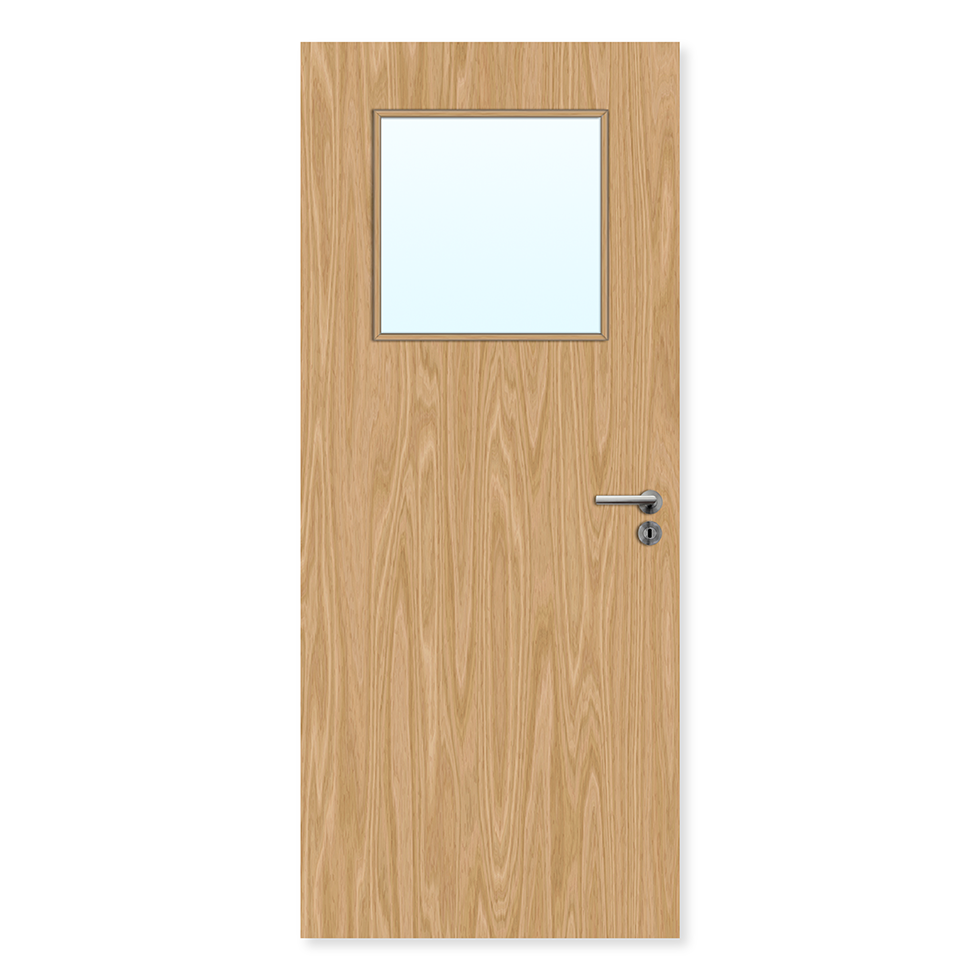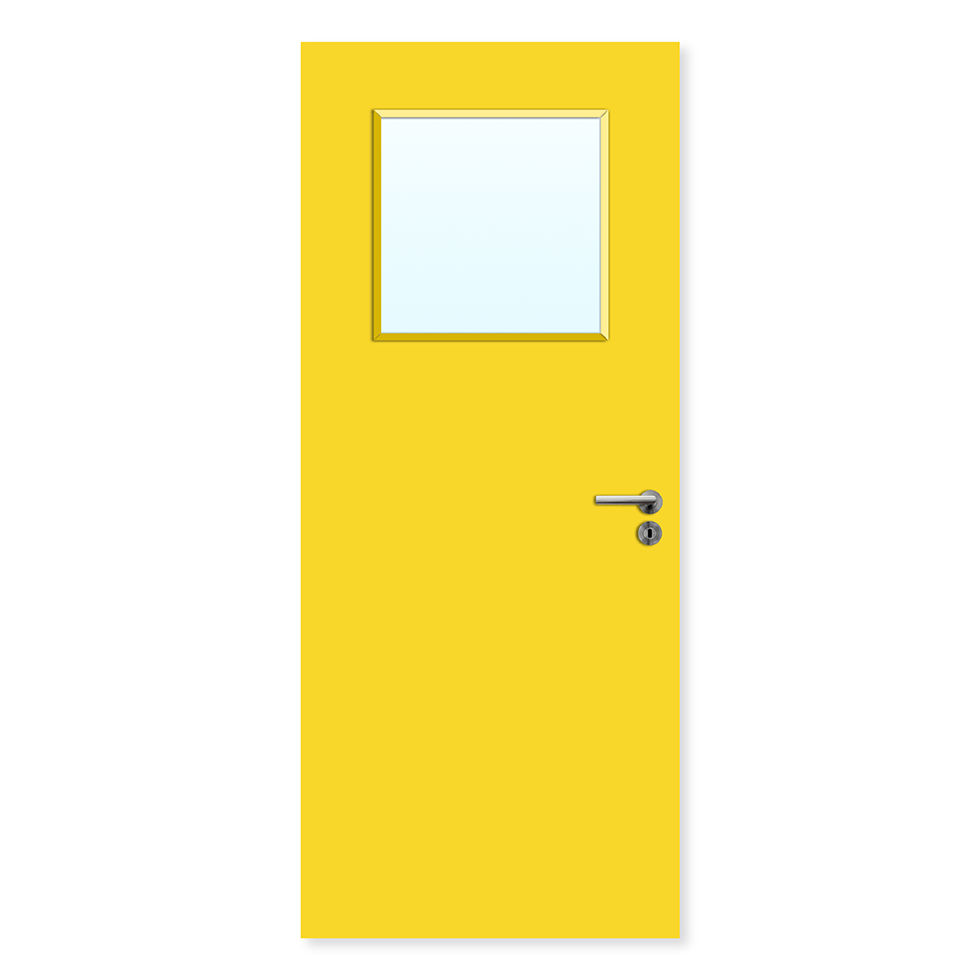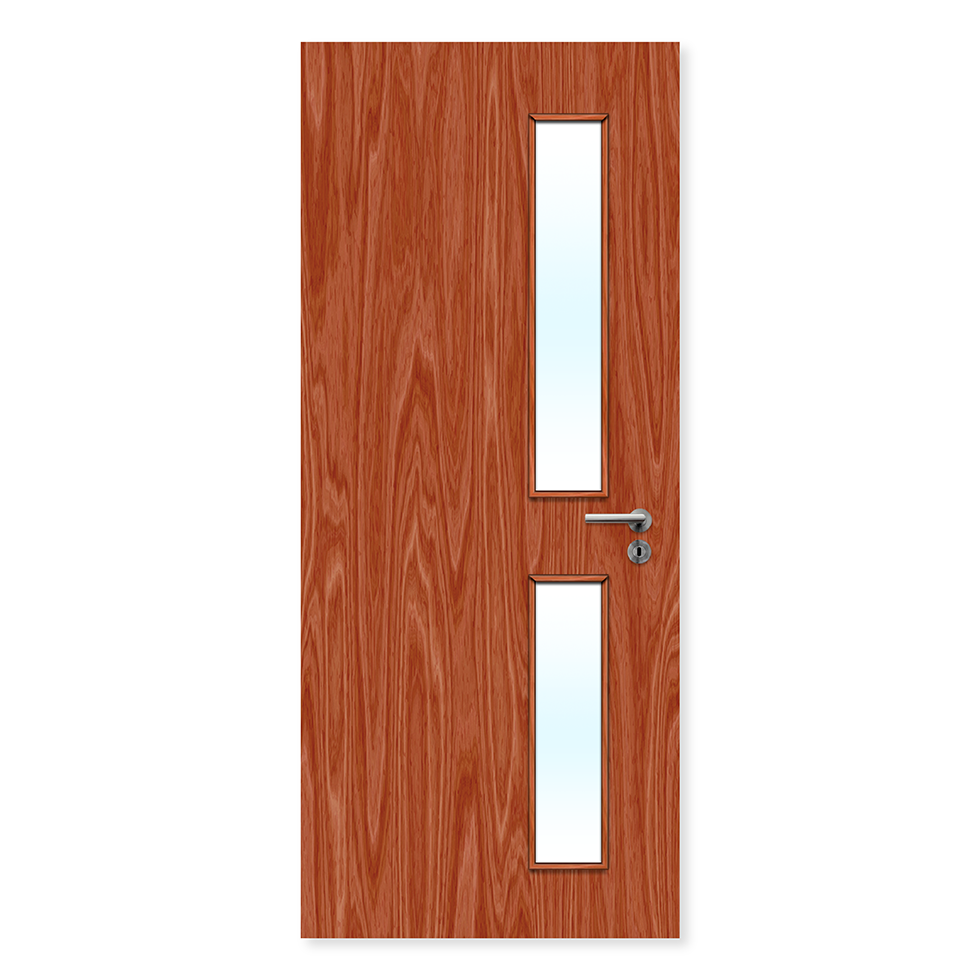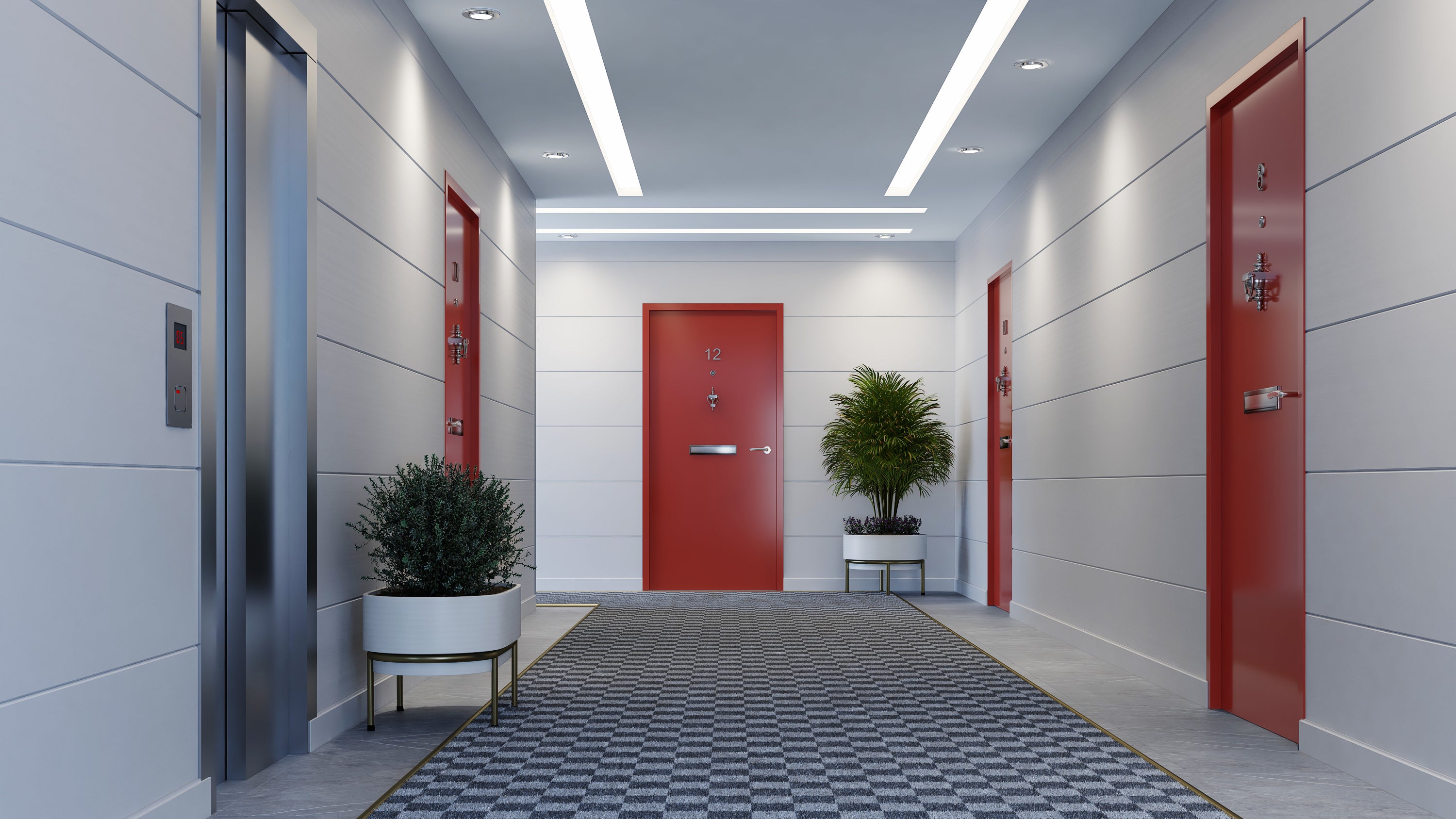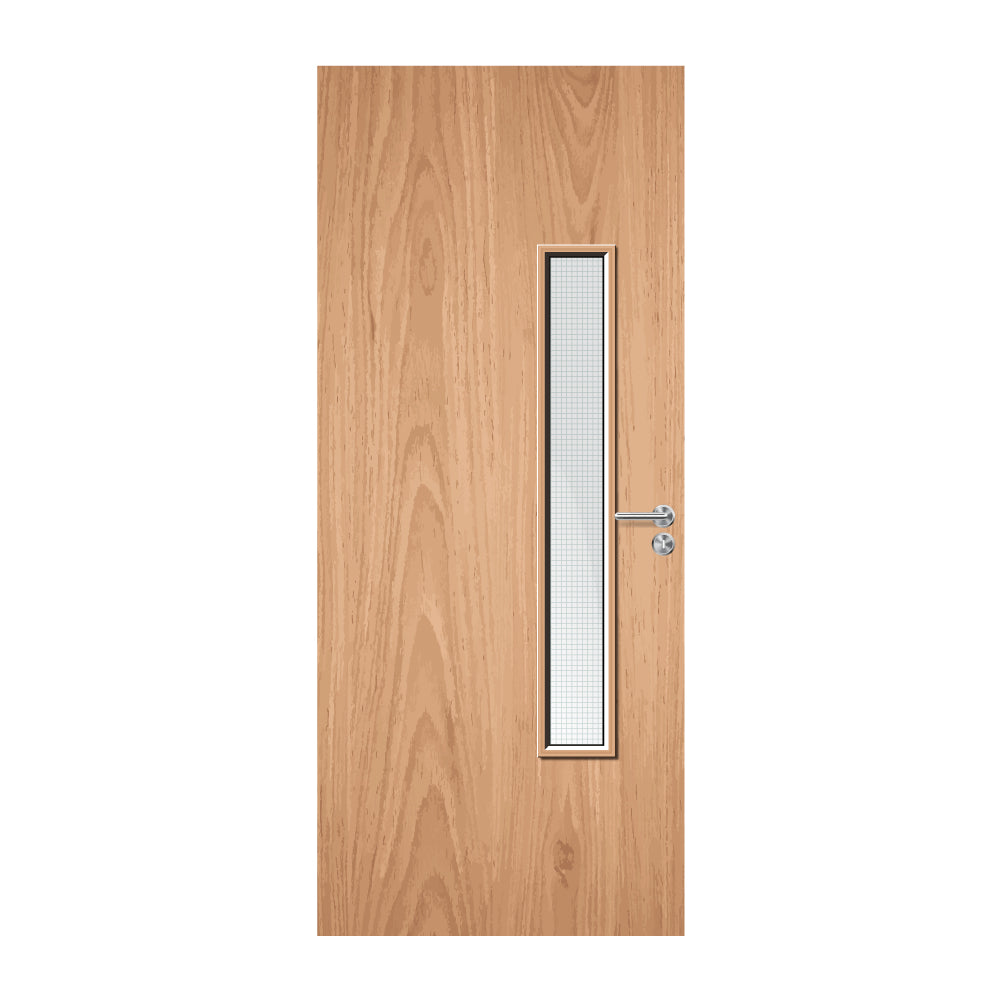Outstanding
Customer Service Second to None
Residential and Nursing Care Fire Doors
The requirement for fire doors within any given type of premise in a range of property sectors is determine not only by the amount of guidance documents issued by HM Government, covering fire risk assessments, but also other technical documents including British codes of practice and current UK Building regulations.
The first decision made by your fire risk assessor is to determine which guide or guides to use to determine the fire safety standards to be adopted in your premises, this should be indicated within the fire risk assessment.
In addition, every building large and small should have a determined fire strategy document (how a building operates under the condition of a fire). Once the fire risk assessment has been completed and the fire strategy is determined, the fire compartmentation of a building can then be identified, which then in turn allows for the location of fire doors to be discovered as part of any fire compartmentation requirements. The person carrying out the initial fire risk assessment and then determining the fire strategy, fire compartmentation and fire evacuation plan, must be ‘competent’ as defined in the main fire legislation The Regulatory Reform (fire safety) Order 2005.
Fire doors are usually found in the following locations:
● Protecting all identified escape routes from the building
● Protecting staircases
● All high risk rooms
● Separating one fire compartment from another in larger premises
● What’s known as ‘dead end conditions’ where escape can only be made in a single direction from the building
● Separating long corridors
● Separating lift shafts from the remainder of the building
● Protecting basements
● Separating large roof spaces
● Separating one building from another
● Any other location deemed necessary by the fire risk assessment taking account of travel distances within the building as identified in the above guidance documents issued by the Government.
The above isn’t an exhaustive list but covers the majority of locations.
Once the location of your fire doors is identified (and ideally on a set of building plans) the level of fire resistance can then be determined. The majority of fire doors in the UK are FD30s which indicates these will withstand heat and smoke for a minimum period of 30 minutes, higher risk areas such as large viler rooms industrial kitchen with frying ranges may have FD60s fire doors recommended as part of the fire risk assessment.
The fire strategy agreed for most residential and nursing care homes is known as Phased horizontal evacuation (PHE), this is where a building is not in initially evacuated outside. It consists of moving residents on a horizontal plane from one fire compartment to another by supervisory staff, to eventually a vertical escape route on upper floors such as internal or external protected staircases.
The reason (PHE) is used is that the majority of residents are non-ambulant, and a number are also either bed ridden, or are dependent or highly dependent on staff assisting them. In these premises smoke control in a fire is critical, therefore all fire doors should be maintained in a ‘suitable and sufficient’ state with suitable fire and cold smoke seals installed around every fire door leaf or frame.
It can be likened to the way a submarine is designed with watertight compartments that can be closed in the event of a leak. Fire doors separating fire compartments act the same and must be smoke tight to prevent smoke travelling through a building in a fire situation.
Consideration should also be given to the type of fire door and frame installed on escape routes that require vision panels to allow for occupants to see if anyone is approaching a particular door from the alternative side.
Door widths are also very important in these types of premises as occupiers can be wheelchair bound so the width has to meet a minimum standard according to building regulation which is usually 920mm minimum.
In busy areas such as corridors consideration should also be given to ‘Hold open’ devices to help residents move around the building with less difficulty, during their daily routines.
Bedroom Doors
All bedroom doors must be a minimum of 30 minutes fire resistant with combined heat and cold smoke seals, the locks if any on bedroom doors must be easily openable from the inside with a thumb-turn lock or similar, locks that cannot be over-ridden from the outside with a key must not be used. Any lift shafts should not open onto corridors with bedrooms located off, there is also a requirement to keep bedroom fire compartments or sub compartments, limited to the number of beds in any single compartment because of evacuation times (usual we accept a maximum of five), which should be determined by your fire risk assessor after consulting with premise management, on how long it takes to evacuate the largest compartment under the condition of fire.
Where sleeping accommodation is situated below a roof space, the roof space must also be separated with fire compartments in line with the fire compartments on the floor below, including any fire doors, which pass through these compartments within the roof spaces.
Building temperatures also have a massive effect on wooden fire door sets particularly if the heating within the building is constantly on and high as is found in most residential and nursing homes, so the core of the fire door should be taken into account, in buildings likely to be installed with wooden fire doors and frames. Gapping between the door leaf and frame can be a major problem. Your installer will advise on the most appropriate door core before installation.
The type of fire doors usually found within residential and nursing care homes is FD30s for bedrooms and in high-risk rooms, the style is usually flush or panelled without glazing. For staircase and corridor protection they are usually but not always glazed doors, with vision panels provided.
Basement doors should be a minimum of FD60s rating (60 minute fire resistance) although two separated FD30s doors can be acceptable, check with your fire risk assessor.
All fire doors must be installed by a ‘competent’ person with ideally third-party accreditation such as FIRAS or a UKAS approved installers certificate.
Certification, BS 5214 2016 explains how a fire door and frame/lining should be installed and all doors and frames/linings must meet the requirements of BS 476 Pt 22 1987.
Fire Door Glazing
There are several glazing options to consider when choosing glazed doors, they are clear, glass wire polished plated (GWPP) or frosted glass. In addition, there are also requirements under the Disability discrimination Regulations (DDA) on where glazing panels should be fitted for vision suitability.
Fire Door Ironmongery
All fire doors should be fitted with appropriate ironmongery that is both fire resisting and certified but also considers the occupancy and any difficulty that may be encountered with residents opening heavy fire doors with self-closers installed. This should be considered by the fire risk assessor when he or she carries out their inspections.
Special areas of a residential or nursing care home such as dementia wards or areas, occasionally require surface coatings to bedroom doors to make the doors look like a person’s previous house entrance doors, these can be PVC stick on coverings or similar, provided the material applied has be tested and is certified non- flammable these treatments can be accepted. In addition, if any letter boxes are installed, they must be fire rated and certified acceptable.
Fire Door Signage
All fire doors apart from bedroom doors, should have a British Standard sign affixed to the face of the door at 1.5m from the floor level, this should state one of the following, depending on location and whether a ‘hold open’ device is in use.
● FDKS fire door keep shut
● FDKL Fire door keep locked shut – usually cupboard or storeroom doors
● FDKC Fire door keep clear – where hold open devices are in use

